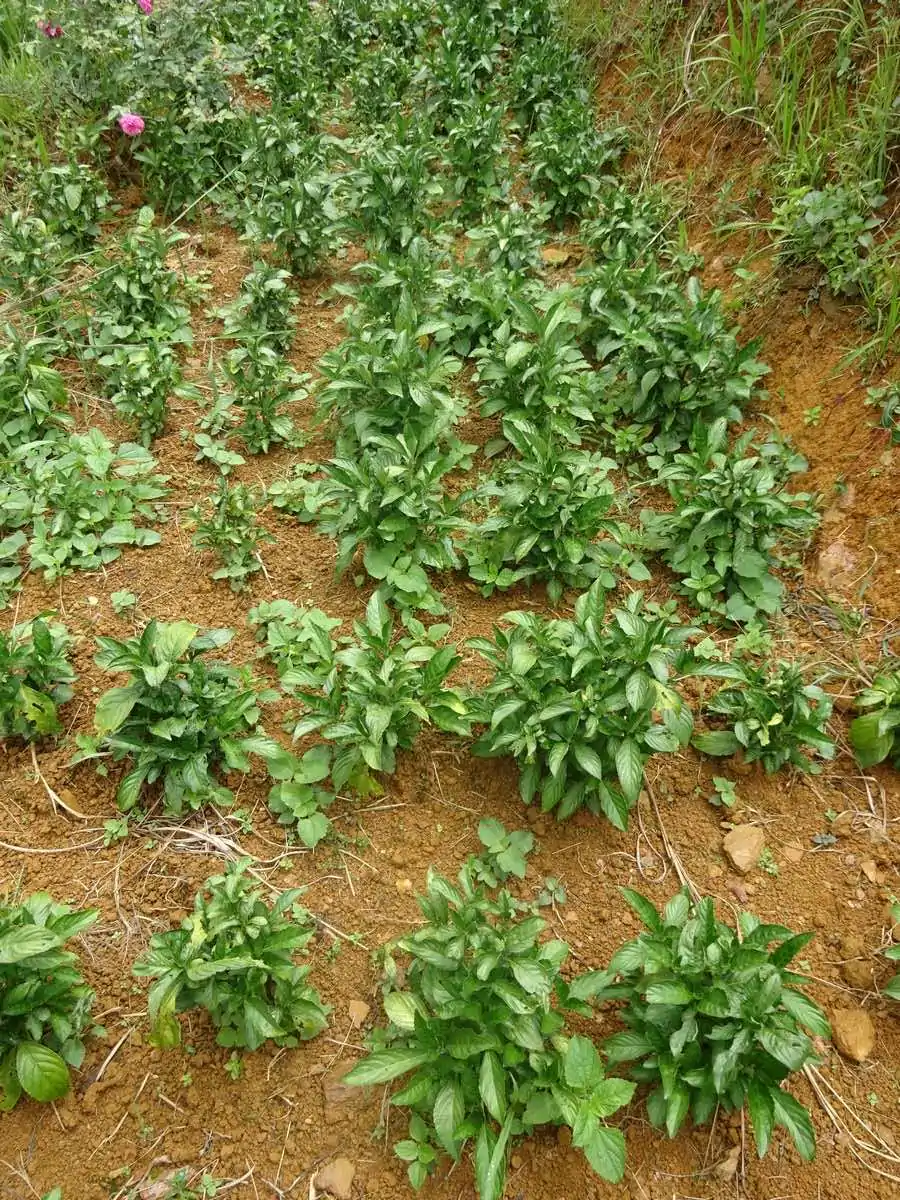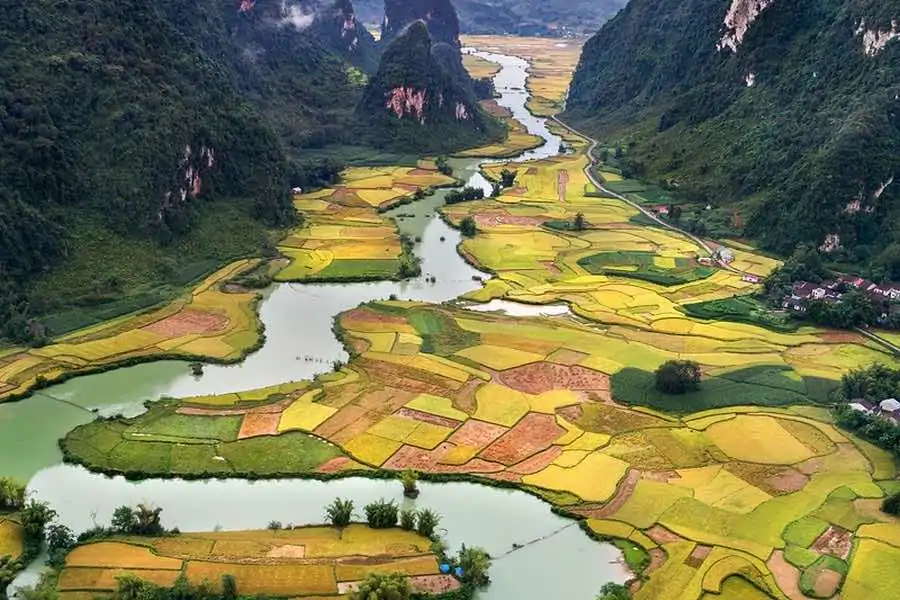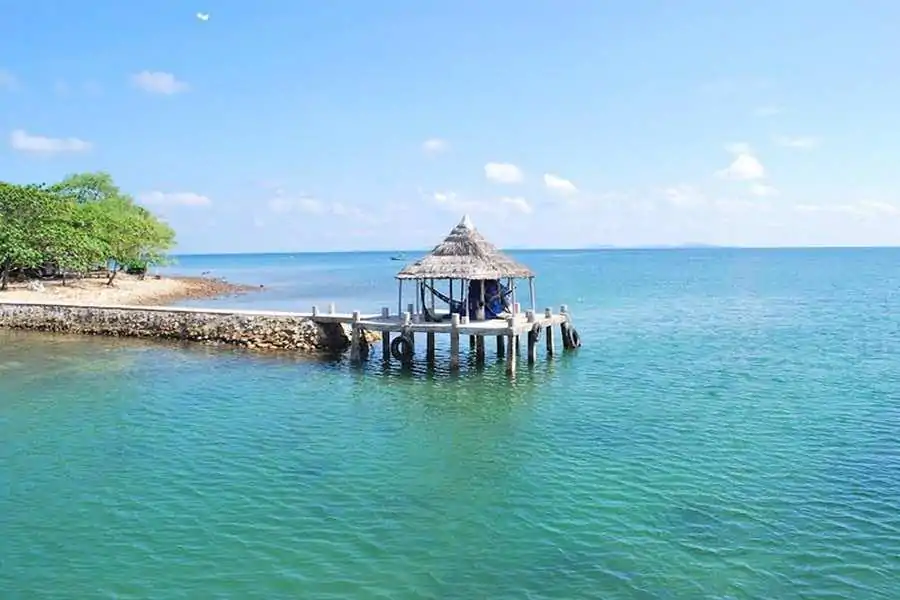The modern lifestyle has set its foot step in the ethnic villages of Vietnam and brought along plenty of new ideas as well as habits. However the Black Hmong group still manage to preserve their cultural identities and also are very proud of them. Amongst different cultural traits, their indigo dyeing technique is what intrigues a lot of people to come and get some knowledge about it. Walking around the villages of ethnic groups in the north of Vietnam, it’s easy to see many Hmong women with blue hands. That’s the trace of the work they’ve been associated with their whole lives- the indigo dyeing to make their traditional costumes. Following our Textile of Vietnam series, today we’d like you to join our experts on another journey to get to know the indigo dyeing technique of Black Hmong in Sapa.

The indigo planting
As we learned that there are several kinds of indigo which different ethnic minorities are using for their own dyeing techniques. The one Black Hmong use is the woody plant and easy to grow on any types of land. Hence, each family normally reserves an area for planting the indigo. It could be in the garden, in the terrace field or surrounding the fences. Whenever the Hmong go, they bring the indigo plant with them. A lifecycle of the indigo plant is from February to July.

Preparation for the indigo extract
Preparation always requires a lot of patience and this is not an exception. Both leaves and branches will be cut off and smashed, then blended with water in a barrel until they’re decomposing. At that time, the resin is perfectly mixed with the water. The residue will be taken out and the lime will go in at this step. After the indigo solution settled down at the bottom of the barrel, the Hmong will draw out the water and use a thick cloth to intensely filter this mixture. What comes out after this whole process is the indigo essence which is extremely condensed and usable for about 1 year.

The dyeing stage
Typically the Hmong use pinewood barrels for mixing the extract and water. It’s not necessary to put more of this extract at every time of dyeing a new batch. Instead, the Hmong women need to keep track of their own dyeing barrels as well as their desired colors for each time. However a compulsory step is adding a bit of alcohol and stirring until it’s bubbling. Another trick here is putting a sack of ashes from the kitchen inside the barrel and just leave it like that, as a filter. According to their experience, the ashes play a role in keeping the color’s durability. Every day from dawn to dusk, the indigo barrel needs to be stirred. In Hmong language, there is a way to tell that the barrel is “alive” or “dead”. Simply take out a spoon of this solution, put it under the sunlight and observe. If it has the lucidity and the bubbles, then it’s ready for dipping some fabrics.

The last phase- Drying
Drying sounds like a piece of cake but this final step is really a make-or-break one. Hence it does require some attention and patience as well. The fabrics need to be turned regularly to dry evenly. If you manage to do that, the color will come out beautifully and flawlessly. Another thing is this phase heavily depends on the weather. With a lot of sunshine, it only takes 3 to 4 days to reach the dark blue color like Hmong traditional costumes have. But rainy weather means that it takes longer for the fabrics to be dried and ready for multiple dyeing times. Sometimes the process can last up to months. And the smell is not very pleasant, to be honest. However after drying under the sun, the smell will go away. Since we just left our fabrics for half a day as our time didn’t permit longer stay, we got the blue color (in the picture) which is a lovely tone as we are big fans of denims.

 Editor team
Editor team September 9, 2019
September 9, 2019 Vietnam
Vietnam
 1273
1273 YOU MAY ALSO LIKE
YOU MAY ALSO LIKE
 read more
read more
